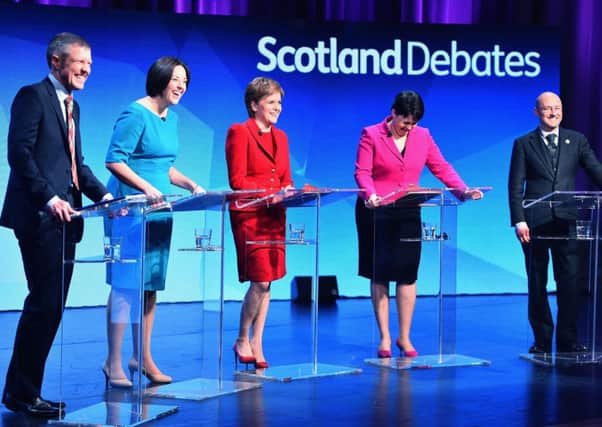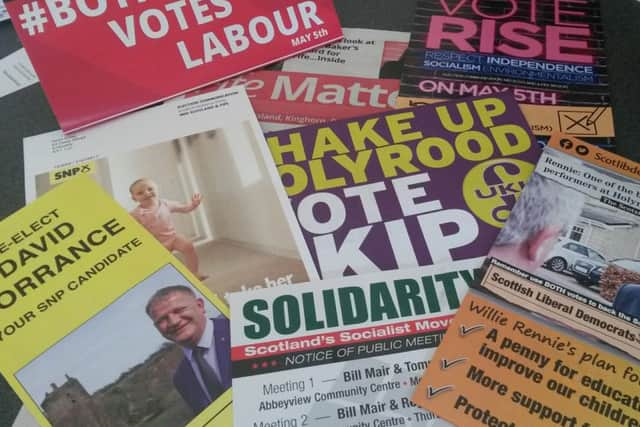Holyrood 2016: Six things to watch out for on election night


1. The battle for second place
Nicola Sturgeon has talked of “jitters” about winning an overall majority for the SNP, but the polls suggest the First Minister has little reason to fear for her re-election prospects. A recent poll gave the SNP an overall majority for the constituency vote, but only 45 per cent for the regional list vote. It’s left to the Tories and Labour to fight out the more hotly contested second place. Ruth Davidson has fought an effective campaign and has given Kezia Dugdale real cause for concern over Labour’s increasingly precarious position as the party of opposition. Different surveys have placed one party slightly ahead of the other in the run up to Thursday; it will be too close to call, despite pollsters’ best efforts.
2. Marginal seats


Scotland’s swing seats are distributed between SNP and Labour MSPs, where some are held by razor-thin majorities—Glasgow Anniesland, for example, was secured by the SNP’s Bill Kidd with a seven vote majority in 2011. Kirkcaldy, Edinburgh Central and Paisley are also marginal constituencies held by SNP MSPs, while Labour MSPs control two such seats, Greenock & Inverclyde and West Lothian. Of these, Edinburgh Central may prove the most compelling contest, a three-way fight between the SNP’s Alison Dickie, Labour’s Sarah Boyack and Tory leader Ruth Davidson. The fallout from the independence referendum and the general election may also have a bearing on Labour-held seats like Dumfriesshire and Lib Dem stronghold Orkney, which the SNP have set their sights on following the Alistair Carmichael affair. A more detailed breakdown of which way these seats might swing was written by Chris McCall back in January.
3. The fringe parties
Advertisement
Hide AdAdvertisement
Hide AdMost pundits have written off any prospect of Rise and Solidarity gaining a foothold at Holyrood tomorrow, and with good reason. Hopes that they could siphon off the pro-independence via the regional list system aren’t reflected in the polls; the trio of Cat Boyd, Jean Urquhart – both Rise – and Solidarity’s Tommy Sheridan apart, there isn’t much star quality to speak of. Nicola Sturgeon’s campaign has focused relentlessly on securing both votes from the electorate, which won’t have helped either party’s chances. On the other end of the political spectrum, Ukip Scotland are thought to have an outside chance of securing a seat via the regional list system, but the party is not in the best of shape. One of its candidates recently claimed the party was on the brink of “civil war”. Other parties in the running include the Women’s Equality Party, the Scottish Libertarians, the Scottish Christian Party, the Trade Union and Socialist Coalition, the Communist Party of Britain, the Animal Welfare Party and the National Front Scotland. Detailed profiles of those parties can be read here.


4. Indyref2
The extent of the SNP’s dominance over the other parties on Thursday may shape the tone of their answers to questions over a second independence referendum. The SNP has maintained that a Brexit would be the likely trigger for another campaign to leave the UK, but the party must secure an overall majority to adhere to another one of their conditions for independence, a “clear and sustained evidence” of majority support.
5. Electoral turnout
We often hear of a post-referendum Scotland of being more politically engaged. After a more sedate campaign, the strength of that conviction is set to be tested on Thursday. A recent estimate for voter turnout predicted the figure would be around 67 per cent. Around 84 per cent of Scots turned out to vote in 2014’s independence referendum.
6. Can the SNP win every single seat?
Odds have been shortened on the SNP’s chances of securing every single constituency tomorrow, but the party has some work to do to unseat the likes of popular local politicians like Ettrick, Roxburgh and Berwickshire MSP John Lamont and Johann Lamont, the former Labour leader and MSP for Glasgow Pollok.
